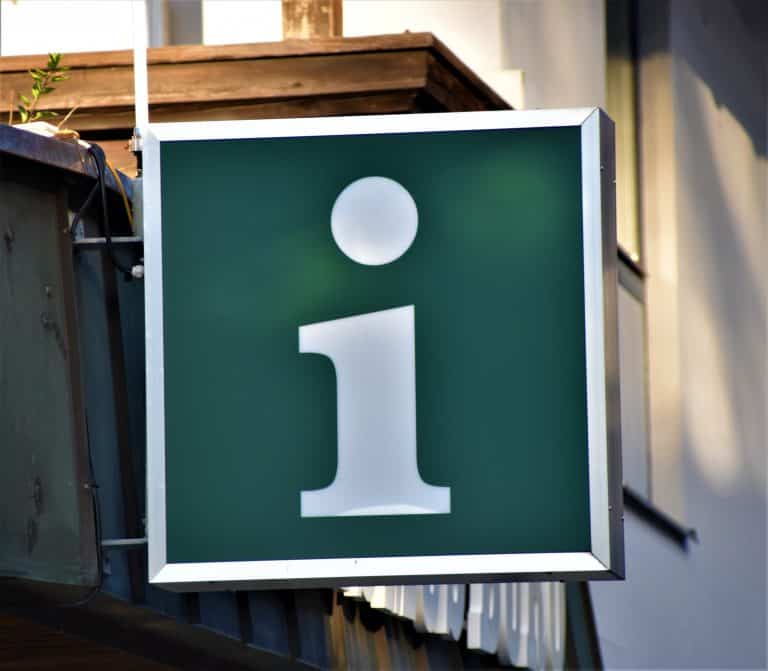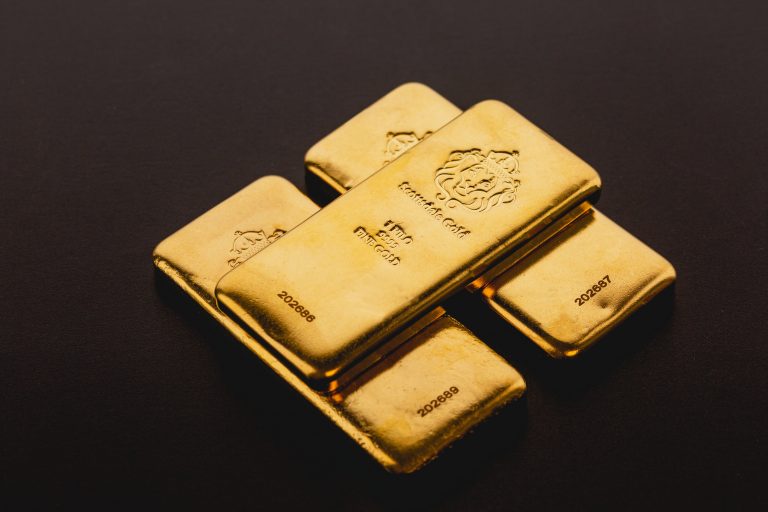The best place to invest money without risk
If you’re looking for a place to invest your money without risk, you may wonder where you can turn.
The best place to invest money without risk is in assets that will grow in value and income over time. Things like low-cost index funds, property and businesses. These will protect you from the ravages of inflation and ensure you have assets and income that keep rising over the long term.
While there is no such thing as a guaranteed investment, some options are less risky than others.
But your first need to understand what risk is and how much of it you need to take to reach your goals.
Here’s a look at some of the best places to invest money without taking on too much risk.

Photo by Leon Bredella on Unsplash
The 3 types of risk you face
- Volatility: the fluctuations in the value of your investment.
- Loss of capital: the possibility that your investment will lose money
- Inflation risk: the chance that your investment will not keep up with the rising cost of goods and services.
You should be looking to understand what they are and are not.
- Volatility is the prices of things going up and down and down and up – it does not mean things are going bust.
- Loss of capital means losing all or part of your money – that’s why you diversify investments -some companies go bust but not all companies simultaneously.
- Inflation is the price of things going up over time. It’s the silent killer in the room and most likely the biggest risk for poverty later in life. Protecting your purchasing power is one of the most important reasons for investing.
You are likely your biggest risk.
- Not starting saving and investing earlier enough.
- Not investing enough
- Trying to stay too safe and then taking too much risk to catch up
- Panicking when things temporarily decline – buying high, selling low, and repeating until broke.
- Not keeping up your financial literacy and education
Low-risk low – Low reward
If you’re looking for a place to invest your money where you won’t risk too much, you’re also suggesting that you don’t want too much reward.
Low risk generally also means low return.
Are you happy with that?
Risk vs volatility
When it comes to investing, there is always some level of risk involved.
However, some investments are riskier than others.
Volatility measures how much an investment’s price moves up and down and down and up.
Investments with high volatility are considered riskier because the price can change dramatically in a short period.
Investments with low volatility are considered less risky because the price changes less over time.
This could be a good or bad thing, you could have your money go up a lot or down a lot in the short and long term – one is good, and one is bad.
Finding your balance between risk and volatility – and more importantly, understanding volatility is the key to your wealth journey.
Risk vs reward
When investing, it’s important to consider both the risk and the potential reward.
Investments that offer a high potential return are often seen as riskier because there is a greater chance that you could lose your money.
You have to work out is the risk a permanent loss of capital or a temporary decline risk.
Inflation and purchasing power risk
Inflation risk is the risk that the value of your investment will be reduced by inflation.
Inflation is a gradual increase in prices over time.
When investing, it’s important to consider how inflation might affect your investments and, more importantly, your living standard as you age.
Some investments are more affected by inflation than others. For example, investments in stocks are usually less affected over the long term.
How much risk should you take?
The amount of risk you need to take will depend on a number of factors, including:
Your investment goals: if you’re investing for the long term, you can afford to take on more risk because you have time to ride out the ups and downs.
Your age: younger investors can afford to take on more risk because they have time to make up for any losses.
Your investment timeframe: if you’re investing for a short-term goal, you’ll need to take less risk to avoid losing money and missing your target.
Your risk tolerance: some people are more comfortable with volatile investments than others. You need to invest in a way that suits your personality but not forget that the ups and downs of the stock market are where you make money.
Your financial literacy level: the more you know about investing, the more comfortable you’ll be with taking on risks. Understanding that volatility and risk are two different things will help you make better financial decisions.
It’s inflation that’s going to make you poor in your old age.
The best places to invest money without taking on too much risk
Here are a few low-risk investment options. You need to balance the low risk with low reward and understand what risks you are trying to deal with in the short, medium and long term.
1. Index funds
Index funds are mutual funds that track a market index, such as the S&P 500. They’re a popular choice for investors because they offer diversification and professional management at a lower cost than other mutual funds.
In an index fund, you are investing in 100s or even thousands of companies all at once, reducing your risk. Over the long term, index funds have outperformed most actively managed mutual funds.
Index funds can be all equities or a mix of equities and bonds. You can mix the asset allocation to match your volatility and growth needs tolerance.
2. Property
Investing in property can offer the potential for high returns, but it’s also a more hands-on investment than some other options
You’ll need to research to find the right properties in the right location. You’ll also need to factor in buying, selling and maintaining a property.
Investing in property can offer diversification away from the stock market. It can also provide a regular income stream in the form of rent.
3. Businesses
Investing in businesses can be a high-risk, high-reward proposition
If the business fails, you could invest in a start-up that takes off or lose your money.
That said, investing in businesses can offer the potential for high returns. And, if you’re investing in a well-established business, the risk may be lower.
4. Government bonds
Governments issue these to raise money for various projects. The returns on government bonds are usually lower than other types of investments, but they’re also considered very safe.
Investing in government bonds can offer stability and security, especially if you’re investing for the long term. And, because they’re backed by the full faith and credit of the government, you know that your investment is unlikely to lose value.
5. Paying off debt
Paying off your debt is a very low-risk option. It’s also one of the smartest things you can do with your money.
You’re guaranteed a return equal to your interest rate by paying off debt. And, if you have high-interest debt, such as credit card debt, you can save a lot of money by paying it off.
Paying off debt is also a great way to reduce stress and improve your financial wellbeing. So, paying off debt is a great option if you’re looking for a low-risk investment that will make you feel good.
Investing in yourself is one of the best ways to invest without taking on too much risk. This could mean taking courses to improve your skills or investing in yourself by buying books or attending seminars.
6. Yourself
There are no guarantees when investing, but investing in yourself is a risk that can pay off big time as you will have the skills, experience and knowledge with you forever.
7. Savings accounts
A savings account is a safe place to park your money if you’re not ready to invest yet. The returns are low, but so is the risk (apart from inflation).
If you’re starting out, a savings account can be a good place to build up your emergency fund or save for a short-term goal. Once you have more money to invest, you can move it into higher-yielding investments.
FAQ: The best place to invest money without risk
What are the best low-risk investments?
There are a few different types of investments that are considered to be low-risk.
These include bonds, Treasury bills, and money market accounts.
Bonds are essentially loan agreements between investors and borrowers.
The borrower agrees to pay back the loan, with interest, over a set period.
Treasury bills are short-term debt obligations issued by the US government. They mature in one year or less and earn a fixed rate of return.
Money market accounts are similar to savings accounts but often have higher interest rates and require a higher minimum balance.
These investment options offer relatively low risks compared to other investments, such as stocks or futures contracts.
However, it’s important to remember that there is no such thing as a completely risk-free investment. Even the safest investment options carry some level of risk.
What is the safest investment with the highest return?
There is no easy answer to finding the safest investment with the highest return. However, investors can do a few things to minimise risk and maximise potential returns.
Some safest investments tend to be backed by tangible assets, such as real estate, bonds and precious metals. These investments typically have less volatility and offer a more steady income or returns. However, they may not provide the highest possible return in percentage gains.
For investors looking for a higher return, stocks are a good choice. While some risk will always be involved with investing in stocks, diversification can help reduce this risk. Investing in a mix of different companies in different industries can help to spread out risk.
What investment has the lowest risk?
Low-risk investments typically include government bonds, treasury bills, and cash equivalents such as money market funds and certificates of deposit.
These investments are considered low-risk because they are backed by your government’s full faith and credit.
In other words, if you invest in a government bond or treasury bill, you can be assured that you will get your principal back plus interest payments when the investment matures.
Cash equivalents such as money market funds and certificates of deposit are also a low risk because they are insured up to a certain amount per depositor per bank.
If the bank goes bankrupt, the federal government will guarantee you will get your money back plus interest payments.
However, many of these things are also low-return investments, so you have to consider the risk of inflation destroying your purchasing power in the long term.
Where is the best and safest place to put your money?
Low-cost globally diversified index funds over some of the best and safest places to invest your money over the long term.
You have to be able to cope with the ups and downs of the global economy and the temporary declines of the stock markets.
Where is the safest place to invest money right now?
In yourself is probably the safest place as no one can take that away from you.
Otherwise, paying off debt or investing in low-cost globally diversified index funds.
Index funds have the potential for short-term temporary declines but the almost guaranteed path to wealth over the long term.
Which investment has the lowest risk of losing money?
There’s no such thing as an investment with zero risk of losing money. Even the safest investments, like government bonds, come with some risk. That being said, there are certainly some investments that are less risky than others.
Here are a few examples
1. Money market funds. These invest in short-term debt and tend to be very stable and low-risk.
2. Investment-grade bonds. These are bonds from companies or governments with strong credit ratings and tend to offer relatively low-interest rates.
3. Index funds that track major stock market indexes tend to be fairly stable and offer good returns over time.
You have to determine which risk you are trying to avoid short-term loss, temporary loss or long-term loss of purchasing power?
How can I double my money without risk?
The joke goes like this, “fold it in half and put it back in your wallet”.
There is no guaranteed way to double your money without risk, but there are a few things you can do to increase your chances:
– Invest in stocks or mutual funds. Over time, these will typically increase in value, allowing you to make a profit. However, there is always the risk of temporarily losing money if the market is downturned.
– Try investing in real estate. Property values usually go up over time, so investing in property can be a good way to make money with little risk. However, there is always the possibility that the property market will crash, and you will lose money.
– Start your own business. This is by far the riskiest option, but it also has the potential to make you the most money. If your business is successful, you could see a huge return on your investment.
How can I grow my money?
Spend less than you earn. Earn as much as you can. Set up an emergency fund. Invest your spare cash in assets like property, businesses and the stock market.
Repeat until wealthy
Final thoughts on the best place to invest money without risk
There are many low-risk investment options available.
The key to finding the best place to invest money without risk is getting the right mix of risk and reward for you.
And to invest in a way that meets your needs and fits your personality.
Investing doesn’t have to be complicated or risky.
There’s no such thing as a risk-free investment. But by understanding the different types of risk, you can find an investment that suits your goals and tolerance for risk and volatility.
Index funds, property, businesses, paying off debt and yourself are all options that have always worked over the long term in managing risks and building wealth.
Remember, the long-term trend of any investment is your friend.
If you want help with your financial planning, sign up for our email and set up a planning meeting.







